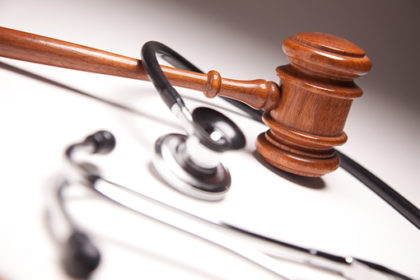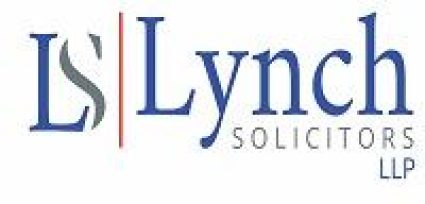
Tipp FM Legal Slot – 23rd July 2013
Orlagh Wafer on CJD & Medical Negligence Part II
Download our CJD and Medical Negligence Part II notes
Last week, an investigation was launched following concerns that surgical instruments were used on patients in Beaumont Hospital after they were used on a patient subsequently diagnosed with CJD. What is CJD and how did this situation arise?
The Health Service Executive (HSE) is trawling through medical records to ascertain how many patients may have been exposed to Creutzfeldt-Jakob Disease (CJD), a rare brain disease. CJD is often referred to as the human form of mad cow disease and is a fatal and incurable form of dementia. The disease normally causes dementia, coma and then death within a year.
RTÉ reported that the patient was not diagnosed with CJD until two weeks after the operation, which was undertaken at Beaumont Hospital, and the equipment had been used on other patients in the meantime. Normal sterilisation techniques are not sufficient to decontaminate equipment used on persons with the disease and much more rigorous procedure or the destruction of the equipment is required.
Last week the Head of Health Protection with the HSE spoke to RTÉ’s Morning Ireland and advised that approximately 10 to 20 people are at risk.
Since the announcement last week Beaumont hospital helpline has received about 1,400 calls. The hospital has informed up to 20 people they have a slightly higher risk of contracting the disease, a spokesman said yesterday.
What is the likelihood that those 20 people may have contracted CJD and how can they find out for sure?
Officials estimated the likelihood of them getting the disease at one in 400,000 compared to the usual rate of one in a million.
There is no simple test (such as a blood test) available to show whether a patient has CJD which means that regular, long-term monitoring is recommended for those at a higher risk.
We spoke about Medical Negligence on the show last week, is it possible that the HSE may have been negligent here?
This incident does raise questions as to whether or not the HSE may have been negligent. In order to prove medical negligence it would have to be proven that either the hospital or the HSE was in breach of duty in dealing with the matter. The HSE has said that a patient was operated on and two weeks later was diagnosed with CDJ and the surgical instruments were immediately removed from use so it would appear that the hospital acted correctly. The only way that there would be negligence would be if the hospital didn’t follow an appropriate procedure. If it transpires that patients have contracted the disease further investigation will be required.
While a Hospital does not undertake to perform medical services, it does undertake to provide appropriate medical services by appropriate medical personnel in a competently run hospital. A Hospital owes a number of non-delegable duties to patients of that Hospital and the HSE (in the context of public hospitals) has an overall responsibility to up hold these duties:
1. To provide a safe place and system for the provision of medical services or;
2. To staff the hospital with appropriate medical personnel or;
3. To provide access to safe and appropriate medical systems or devices.
Generally, how does Medical Negligence occur?
To recap on last week, Medical Negligence is essentially an act or omission by a health care professional which is below the accepted standard of care and which results in injury or death to a patient. It is not sufficient that a mistake was made negligence must be shown.
Medical negligence can happen because of:
- Diagnosis – i.e. misdiagnosis or delayed diagnosis;
- Treatment – i.e. errors in the medical treatment such as incorrect medication, surgical errors, exposure to infection (MRSA etc) or;
- Disclosure – i.e. failure to inform the patient of the risks of the treatment of procedure.
Diagnosis – i.e. misdiagnosis or delayed diagnosis
In one case a patient died of a brain haemorrhage. He attended his GP several times before his death complaining of headaches. He was sent to casualty but was not admitted and the next day he was admitted again, unconscious, and died soon after. The High Court found that the GP was negligent because he did not take into account the man’s version of events and his detailed accounts of the seriousness of his symptoms. The Supreme Court also found in favour of the plaintiff, but on the grounds that where the casualty officer ignores and does not follow up on a referral letter, it is an “inherently defective” practice and is negligent.
Treatment – i.e. errors in the medical treatment such as incorrect medication, surgical errors, exposure to infection (MRSA etc)
The current situation with CJD could fall under the “treatment” category of medical negligence.
In another case the Plaintiff’s husband had surgery to remove a tumour in his throat. On the second night after the surgery the tracheotomy tube was put out of place. By the time the airway passage was established the man was brain dead. The case was brought on the grounds that the surgeon allowed his patient to recover in ICU where there was no-one trained to replace a tracheotomy tube. The defendants disputed liability on principle of “general and approved practice”. The Court acknowledged that nurses in Ireland are not specially trained to change tubes of this type and that no negligence therefore arose on this point. However, he also noted that this was an emergency situation which required special training. The Court found that failure to have a person, nurse or doctor in the ICU who was trained in the replacement of a tracheotomy tube, under the circumstances, was an “inherent defect”. The surgeon was found guilty of negligence because the deceased would not have died if a trained person been present in ICU.
What would be an example of Disclosure – i.e. failure to inform the patient of the risks of the treatment of procedure?
An example of a case due to a failure to disclose arose in 2000. The Plaintiff underwent bone graft for a dental implant procedure. This resulted in damage to a nerve in his chin and he suffered chronic persistent neuropathetic pain. Before the operation the practitioner told the plaintiff that there was no guarantee that there wouldn’t be unforeseen complications. However, he did not disclose to the plaintiff that there was a risk of the chronic neuropathetic pain, which resulted. Expert witnesses said the risk of damaging the nerve was too remote to require disclosure. In the High Court Kenny J held that since the injury was a known and foreseeable consequence of damaging a nerve, the fact that it was unlikely was irrelevant. He adopted the “reasonable patient assessment of disclosure”, which is used by the courts in America and Canada. This means that the standards of disclosure for medical practitioners should be set by patients instead of set by doctors for doctors. In his judgment Kearns J said that all material risks should be disclosed by doctors and they must consider:
- the severity of the consequences
- the frequency of risk
- the plaintiff’s particular circumstances prior to the surgery.
The plaintiff failed to recover damages because although the defendant had breached the duty to disclose, the plaintiff had failed to establish a connection between the non-disclosure and the injury. The court referred to the evidence given that the Plaintiff had been reluctant to attend pre-operation consultations. This reluctance made all the difference.
How is Medical Negligence proven?
There are four main steps in proving medical negligence and if the patients in question contracted CJD certain steps would need to be followed including:
- Duty of Care – a legal duty is owed whenever a health care provider or hospital undertakes to treat a patient;
- Breach of Duty of Care – it must be shown that the health care provider in question failed to follow the relevant standard of care;
- Injury – the breach of duty must have caused injury and;
- Damage – Regardless of whether or not the health care provider was negligent, there is no basis for a claim in negligence without damage, be it monetary, physical or emotional.
When you have a client who believes s/he has a Medical Negligence case what steps do you, as the solicitor, take to establish a possible case or “cause of action”?
Medical negligence claims, in a similar way to personal injury claims, are made up of a series of hurdles. If you do not clear the first hurdle you cannot move on to the next. To establish a case in medical negligence we need to:
- Take up copies of all medical records and check them. In some cases we may even send them to a medical records expert for analysis;
- Write to the doctor, health care professional or institution we believe is responsible for the injuries caused;
- Medical experts specialising in the particular area of medicine involved will then be asked to consider whether or not the treatment received was negligent or sub-standard and if so the extent of the damage it caused.
- If we consider that we have enough evidence to prove a case of medical negligence, then we advise starting court proceedings immediately.
- Clinical negligence cases can be settled by negotiation without the need to proceed to a full trial but they are rarely resolved without starting court action.
How would listeners know if they have a claim in Medical Negligence?
If you, or a family member, have suffered injury due to the actions or inactions of a medical professional you may be entitled to compensation. You will be able to discuss the facts of your situation, in detail, with a member of our medical negligence team. As experts in the area of medical negligence litigation, we will assess your complaint and assist you in reaching a decision on whether to make the claim or at the very least investigating it further.


